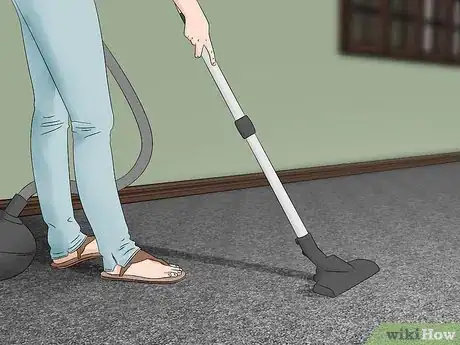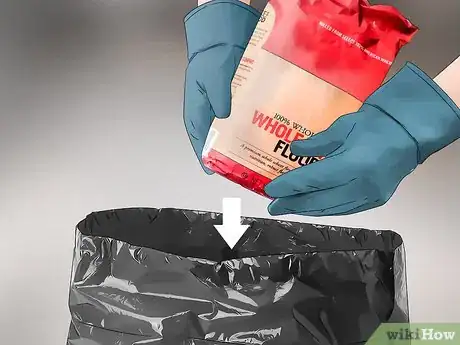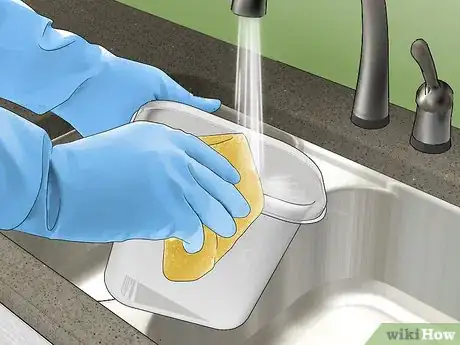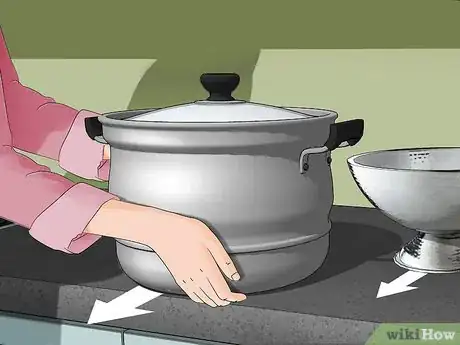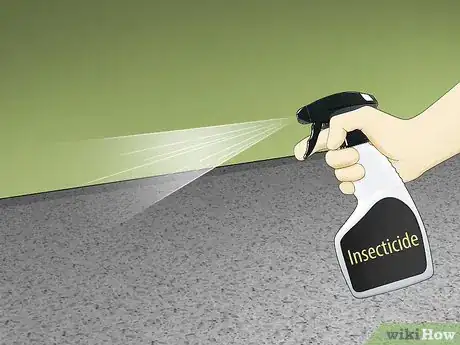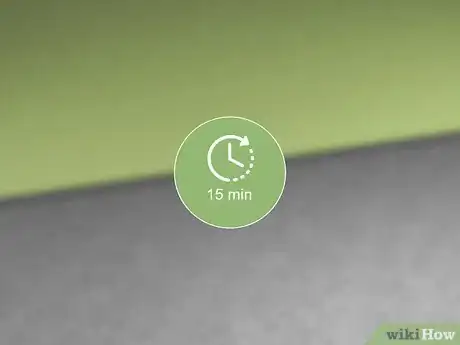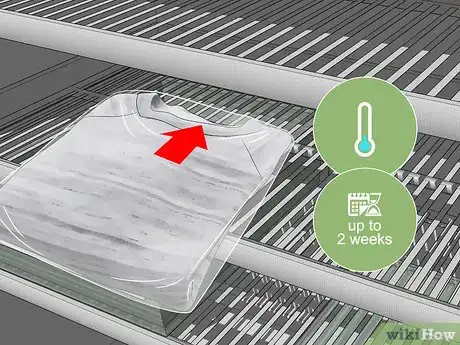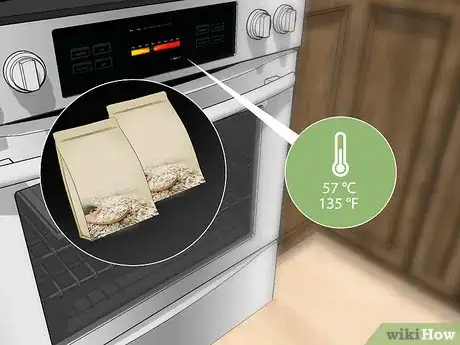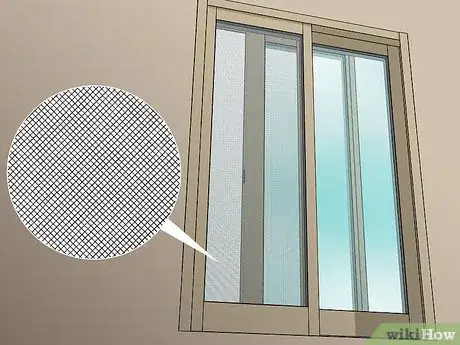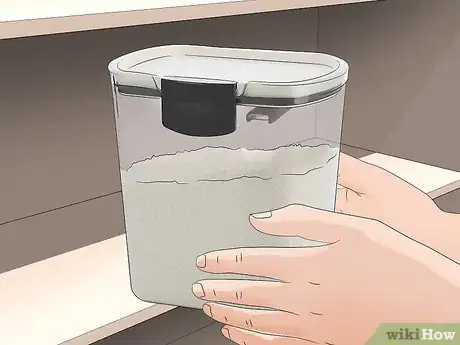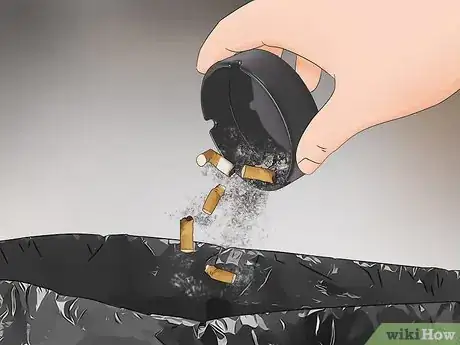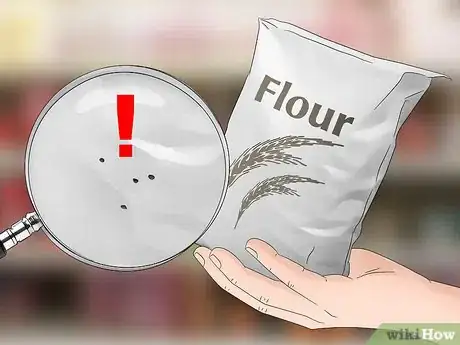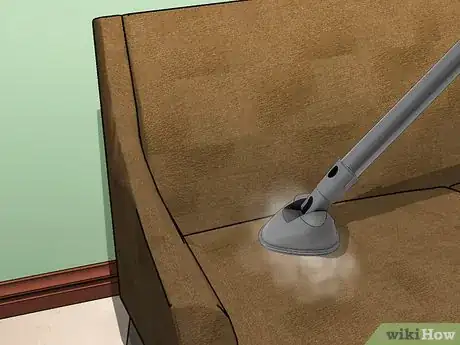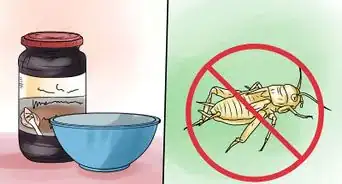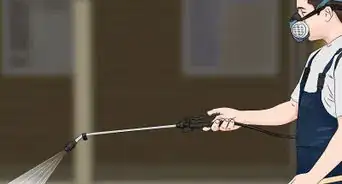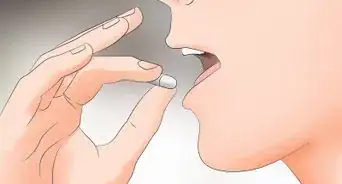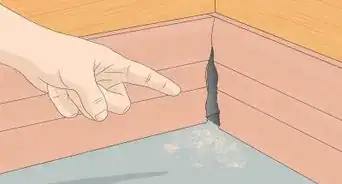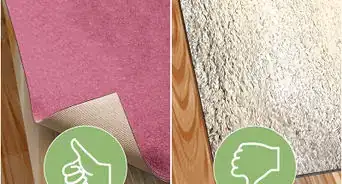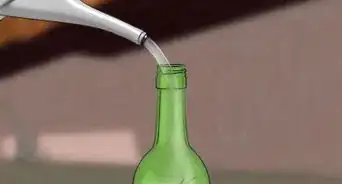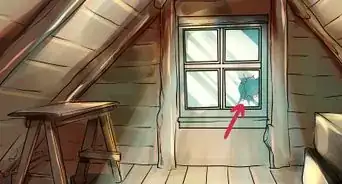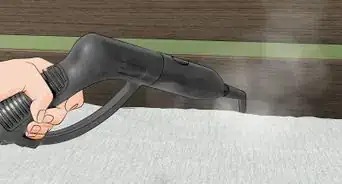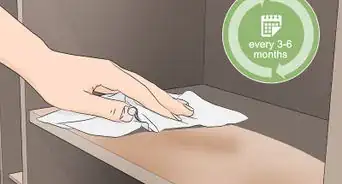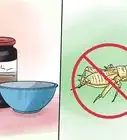This article was co-authored by wikiHow Staff. Our trained team of editors and researchers validate articles for accuracy and comprehensiveness. wikiHow's Content Management Team carefully monitors the work from our editorial staff to ensure that each article is backed by trusted research and meets our high quality standards.
This article has been viewed 22,518 times.
Learn more...
Cigarette beetles are a common pest throughout the world. They feed on organic material, including food and plant matter. Tiny, round, brown bugs flying through your home can be a sign of an infestation. Stopping these bugs often involves giving your home a thorough cleaning. You can also use pesticides and other treatments to eliminate some beetles. Killing off all the beetles can take a few months, but diligent treatment can stop the bugs from spreading.
Steps
Eliminating Bugs through Cleaning
-
1Give your home a thorough cleaning and vacuuming. Any spilled food has the potential to become a food source for cigarette beetles. The most effective way to eliminate them long-term is to remove these food sources. Every few weeks, give your home another deep cleaning to stem repeat infestations.
- These beetles often live on food sources you cannot see, such as crumbs and other insects.
- Vacuum carpeting and use a hose attachment to reach tables and cabinets.
-
2Discard items that are infested. Many items that are infested are difficult to save because the beetles do so much damage. Any food will still have the bugs in it, even if you successfully sterilize it. Throw away these items as soon as you discover them to prevent the beetles from spreading further.[1]
- You can wrap items in plastic to make sure the beetles don’t escape. Then, seal them inside a garbage bag.
- Pouring vinegar on items like flour and spices may stop the cigarette beetle eggs from hatching.
Advertisement -
3Disinfect old storage containers. After dumping food out of a storage container, wash it out with liquid dish soap and water. This removes any food particles inside the container. It should also ensure that all beetle eggs and larvae are rinsed out.[2]
- Clean your containers out if you notice cigarette beetles nearby or suspect the food inside is infested.
Using Chemicals and Temperature Treatments
-
1Install pheromone traps in busy areas. You can order cigarette beetle traps online. These traps, made of paper and cardboard, lure in adult beetles. Hang them high up in areas you suspect are infested. If beetles end up in the trap, you may uncover a nearby spot where the beetles gather.
- These traps are often used in commercial businesses to prevent infestations.[3]
- The traps cannot stop infestations. They can help you locate infestations and show you if there are beetles present in your home.
-
2Remove items from the spot you wish to spray. Clear out shelves, cabinets, and other spots so the insecticide reaches all surfaces. The beetles often live inside cracks and crevices. Make sure these spots are uncovered so the spray reaches them.[4]
- If you are cleaning a cabinet, for example, each item inside it needs to be inspected individually. You usually cannot treat these items with an insecticide.
-
3Spray an insecticide to eliminate adult beetles. Purchase a pyrethrin or resmethrin insect spray, which you can find online or at many general stores. They often come in aerosol cans, although you can get a liquid variety to use with a pump sprayer. Insecticides are used to coat infested surfaces in your home and should not be used on most individual items.[5]
- Plant-based sprays like pyrethrin products are generally considered non-toxic, but you should still take precautions by keeping people and pets away.
- Insecticides are a final solution. They only stop adult beetles. You still need to clean your home regularly to clear out any younger beetles remaining.
-
4Allow the spray to dry for 15 minutes. Wait until the spray dries completely before storing your items again. Once it does, restocking your cupboards and closets should be safe. Make sure all of your items are wrapped up or sealed in containers that keep bugs out.
- Remember that the spray won’t take care of beetle eggs and larvae. If they are present in your items, you will have more adult beetles.
-
5Sprinkle a desiccant powder to protect storage areas. You can do this after spraying an insecticide. Put on a respirator mask first so you don’t breathe in the power. Lightly dust storage areas like boxes, cabinets, and cupboards. The powder kills any bugs that touch these surfaces and can help you protect stored items like dried flowers.[6]
- You can order desiccant powers online or at general stores. Look for diatomaceous earth or silica aerogel.
- These powders are considered non-toxic to people and pets, although it can irritate your body if you breathe it in.
-
6Freeze items for up to 2 weeks without using insecticide. First, store your item in a freezer bag or container as needed. Then, leave the item in temperatures below 0 °F (−18 °C). This is a good way to eliminate beetles on items like books and art that you want to save. You can freeze most items, including any type of clothing, books, and food.[7]
- Freezing may remove all the beetles as early as within 6 days. To ensure the infestation is clear, freeze the item for longer periods of time.
- Throwing away food is usually better than freezing, since any beetles killed in the process remain in the food.
-
7Heat items in the oven without using insecticide. Temperatures over 135 °F (57 °C) can kill beetles. You will need to leave the item in the oven for 2 to 4 hours. This tactic may be used on items that may not combust, including paintings, food, some furniture, and some clothing.[8]
- Like with freezing, heat kills beetles but does not remove them from food, so you may not want to eat anything they have infested.
Preventing Beetle Infestations
-
1Cover doors and windows with screens. Adult cigarette beetles fly into homes during the spring and summer. If you have your windows and doors open during this time, check the openings for damage. Broken screens should be repaired or replaced as soon as possible.
- The bugs smell food in the air, so they fly towards it and often end up in homes.
- These beetles can still get in when you open doors. Avoid letting the doors linger open.
-
2Seal cracks around your house. Inspect the outside of your home to find any passageways that lead inside. Beetles can crawl inside holes in the foundation or gaps between building materials. These spots can be very small, but they need to be fixed right away.[9]
- You can fill spots with concrete, caulk, or an expanding foam from a hardware store.
- If your home has many large cracks, you may need to call a professional to inspect the foundation.
-
3Seal food-grade material in containers in a dry spot. This is tough to do, since cigarette beetles eat a wide variety of food. Grains, such as flour and even pet foods, are common infestation sites. Items made from plants, including flowers, books, clothing, and furniture, can also be become infested. Move these items to dry cabinets, cupboards, and other areas to avoid attracting beetles.[10]
- For example, store food in plastic bins and jars. Keep cigars in humidors.
- Store items such as dried flowers, books, and artwork properly or avoid keeping them in your home.
- Cigarette beetles can even eat cockroach and rat poison, so dispose of these items if you aren’t using them.
-
4Throw away cigarette butts and clean ashtrays. Like the name suggests, cigarette beetles like tobacco products. To prevent infestations, clear out your ashtrays after each use. Make sure cigar and cigarette butts are extinguished before putting them in the trash.[11]
- If someone smokes outside, sweep up cigar and cigarette butts on occasion to keep beetles away from your home.
-
5Inspect items before buying them. Cigarette beetles can hide in used items as well as food products. Check items for signs of damage. You may see holes in bags or bite marks on other items. Also look for unexplained brown debris on these items, which can be a sign even if you don’t see any bugs.[12]
- Avoid buying items you suspect are infested. If you bring an item home, clean it or throw it away immediately.
- Adult cigarette beetles are about 2 mm (0.079 in) long, brown, and somewhat rounded.
- Cigarette beetles larvae are white worms with brown heads.
-
6Clean used items after buying them. If you buy secondhand items, such as dolls, books, and furniture, be aware of signs of bugs. The bugs may not be visible, especially if they hide in areas such as cushions. Wash these items thoroughly by vacuuming and using a disinfectant spray.[13]
- If you can, clean these items off outside so you can avoid bringing bugs into your home.
- Cigarette beetles usually do not bother with wood items, but they may be present in objects made with other organic material like leather, silk, or plants.
Community Q&A
-
QuestionI find a few of them at a time on my mattress. I removed all the sheets, but I still find them there. Are they eating my mattress?
 Community AnswerThey are not eating your mattress but they are living there. All your bed needs is fumigation or you can put your bed in the sun for a day or two.
Community AnswerThey are not eating your mattress but they are living there. All your bed needs is fumigation or you can put your bed in the sun for a day or two. -
QuestionI found the beetles all over my clothes in my closet. Can I wash and dry my clothes to get rid of them and use my clothes again without any fear?
 Community AnswerIf you noticed a piece of clothing with a significant amount of beetles on them, start by tossing them out. For the rest of the clothes, wash them 3 times and make sure that there aren’t any. You shouldn’t really worry, cigarette beetles moves to places with food so they can lay their eggs and they can have food to eat right away. If you’re seeing a lot more of them, call an exterminator.
Community AnswerIf you noticed a piece of clothing with a significant amount of beetles on them, start by tossing them out. For the rest of the clothes, wash them 3 times and make sure that there aren’t any. You shouldn’t really worry, cigarette beetles moves to places with food so they can lay their eggs and they can have food to eat right away. If you’re seeing a lot more of them, call an exterminator.
Warnings
- Many pesticides are toxic. Use them outdoors if possible and keep other people and pets away from the area.⧼thumbs_response⧽
Things You’ll Need
Eliminating Bugs through Cleaning
- Vacuum
- Resealable plastic bags
- Freezer
- Plastic wrap or vinegar
- Dish soap or disinfecting spray
- Water
Using Chemicals and Temperature Treatments
- Insecticide spray
- Freezer
- Oven
- Containers
Preventing Beetle Infestations
- Window and door screens
- Crack filler material
- Resealable containers
- Trash bags
- Desiccant powder
References
- ↑ https://citybugs.tamu.edu/factsheets/household/food-fabric/ent-2004/
- ↑ https://pestid.msu.edu/insects-and-arthropods/cigarette-beetle/
- ↑ http://entnemdept.ufl.edu/creatures/urban/stored/cigarette_beetle.htm
- ↑ http://ento.psu.edu/extension/factsheets/cigarette-beetle
- ↑ https://citybugs.tamu.edu/factsheets/household/food-fabric/ent-2004/
- ↑ https://citybugs.tamu.edu/factsheets/household/food-fabric/ent-2004/
- ↑ https://citybugs.tamu.edu/factsheets/household/food-fabric/ent-2004/
- ↑ https://citybugs.tamu.edu/factsheets/household/food-fabric/ent-2004/
- ↑ http://ento.psu.edu/extension/factsheets/cigarette-beetle
